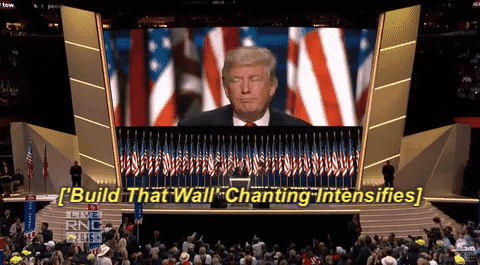Over two dozen scientists have proposed a wall on the U.S.-Mexico border that we should start building right now.

Donald Trump’s promise to build a wall across the U.S.-Mexico border is one of the most grandiose and unnecessary policies ever pursued in U.S. history for seven simple reasons:
1. The population of undocumented people living in the U.S. is at its lowest point in a decade.
2. In 2017, the number of illegal border crossings is at a 46-year low.
3. Over 40% of people who come to the U.S. illegally do so via airplane.
4. Most unauthorized immigrants came here legally and overstay their visas.
5. Most drugs that enter the country don’t come across the southern border.
6. It’s a ridiculous waste of taxpayer dollars.
7. Undocumented immigrants actually cause less crime than native-born Americans.
Facts be damned, Trump’s supporters are in love with the idea of walling ourselves off from our neighbor to the south.
So a consortium of 28 engineers from a dozen universities have come up with a genius idea that satisfies their fiendish desire for a wall while making a huge commitment to alternative energy.
According to a white paper released by the group, the border is an ideal location for generating alternative energy. “Given that most of the southern border lies in arid or semi-arid regions having high solar irradiation and wind, an energy park along the border is both feasible and desirable,” the paper reads.
The amount of solar energy production would be staggering.
The white paper estimates that a solar park along the entire border would produce the same amount of energy as the the hydropower production along the U.S.-Canada border and approximately the same amount that would be generated by a nuclear plant.
“Democrats want a Green New Deal. Republicans want border security,” Luciano Castillo, a professor of energy and power at Purdue University who leads the group, told Scientific American. “Both parties could win. It could be a win–win for the U.S. and Mexico, too. This idea could spark a completely new conversation about the border. And we need that.”
The team has presented the plan to three U.S. representatives and one senator.




